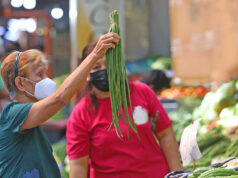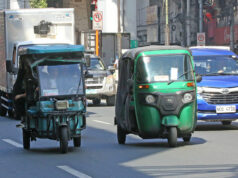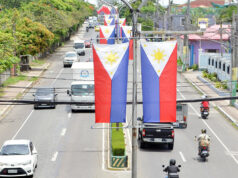Can ukay-ukay save the planet?
EVERY outfit tells a story, but are you sure you’re telling the right one? In the years to come, will your choices today place you on the right side of history? The choice you made will still be evident years from now, when that shirt you bought on impulse will still sit in a landfill, intact when you won’t be. A movement called FashionRevolution, starting in the UK and finding roots in the Philippines, rises from the simple question, “Who made my clothes?”
The question is important to the organization: Fashion Revolution began as a response to the 2013 Rana Plaza collapse, where a commercial building housing sweatshops in Bangladesh collapsed, killing 1,134 people. It was then revealed that many of the factories in the building were making clothes for several brands in fast fashion, solid evidence of the problems the convoluted supply chain of the fashion industry creates.
The organization has held Fashion Revolution Week worldwide, extended from a day of commemoration held every year on April 24, the day Rana Plaza collapsed. “Not many people know that there are a lot of social and environmental issues in the fashion industry,” said Sophia Calugay, country coordinator for Fashion Revolution Philippines, during a press conference. Among these issues are human trafficking (through modern-day wage slavery), and pollution caused by factory operations. “We love fashion but we don’t want our clothes to come at the cost of our people and our planet. We believe in a fashion industry that values the people, the environment, creativity, and profit — in equal measure,” she said.
During the talk, Fashion Revolution presented research they conducted about what they see as a solution to some of the fashion industry’s issues: used clothing, locally called ukay-ukay. The research extols the ability of used clothing to recirculate resources and delay the appearance of textiles in landfills. However, the same research says that the used clothing industry in the country is technically illegal: it breaks Republic Act No. 4653, which bans the importation of used clothing and “rags,” to “safeguard the health of the people and maintain the dignity of the nation.”
Fashion Revolution’s research reveals that misdeclaration of goods, redirection of relief goods, and gifts from abroad enable the trade, thanks to widespread corruption in the Bureau of Customs. For instance, the research says that a common way to enforce the law is to confiscate and destroy only a fraction of the secondhand clothes: the rest are set free in exchange for a bribe.
Ms. Calugay, said that after the clothes enter the country, their resale is considered a gray area, legally and morally, considering that several businesses are legally registered as secondhand clothing stores. A solution posed by the organization is to revise the law, conduct impact assessments, and restrict secondhand stores only to some parts of the Philippines, the better to control the influx of imported secondhand clothes, the sheer volume of which, in the dozens of tons, can rival the shipments of fresh clothing from fast fashion brands.
Ms. Calugay also pointed to changing consumer patterns especially in developing countries that contribute to the problems posed by the growing fashion industry. “You have a soaring middle class population [who buy] a lot of clothes. You want to address that population.”
Ms. Calugay gives several solutions to reduce consumption in fashion: there’s thrifting, buying local (to reduce the carbon footprints in buying imported clothing), swapping (Ms. Calugaypointed to a silk skirt she and her mother swapped), and repairing clothes that are already in one’s closet.
“Just fall back in love with the clothes you already have,”she said.
Fashion in the age of climate and social change has to transform from an exclusionary exercise in economic ability, to a show of moral responsibility for the planet and its people. “We want consumers to buy less, and buy with quality.
“If you need it today, are you going to wear it again tomorrow?” — Joseph L. Garcia
Ukay-ukay shopping tips
ON an excursion to secondhand shops or ukay-ukay in Makati Cinema Square and Guadalupe Nuevo in Makati, Sophia Calugay, country coordinator for Fashion Revolution Philippines, pointed out the various branded outfits she spotted, along with real Dr. Martens boots, and gave a few tips.
• Check for holes and stains to make sure you’re getting your money’s worth.
• Wear a mask, for some of the clothes have been taken fresh out of containers and boxes, unwashed, and might trigger allergies.
• Sanitize purchases by running them under hot water, and then thoroughly handwashing them (machine washing might damage the fabric beyond repair).
While there are sustainability benefits from thrift-shopping, of course there’s an an emotional benefit too: there’s the thrill in finding treasures, but also, “It’s quite fun to do it with friends,” said Ms. Calugay.



